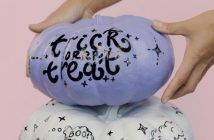
Spring Festival is truly a holiday for hedonists – a time to let loose and gorge yourself silly. Here’s a quick primer on what traditional Beijingers have been stuffing their faces with over the holiday season:
Jiaozi (饺子) – Dumplings are popular year-round but like turkey on American Thanksgiving, they go hand-in-hand with celebrating Spring Festival. The term ‘jiaozi‘ sounds a bit like the Chinese phrase for "out with the old and in with the new" and their shape is resembles the gold and silver ingots people used as currency in ancient times, so there is actually a symbolic meaning behind eating these steamy, savory morsels at this time of year. Check out our recipes for making jiaozi at home in this post or try them out at any of these restaurants around town (but do call ahead to make sure they’re open).

Labazhou (腊八粥) – Translating roughly as "Eight Treasure Porridge," this powerpacked congee dish is made from a melange of rice, nuts, seeds and grains and is traditionally eaten on the Laba Festival on the eighth day of the the twelfth lunar month (which fell on January 19th this year). One legend has it that the dish was actually derived from India and was fed to Sakyamuni (a.k.a. Buddha) by a shepherdess when he fell ill during his travels. People were eating it all over China by the Song Dynasty and the tradition continues to this day. Down south they like to eat it with salty pickled vegetables, while here in Beijing the porridge is usually served sweetened with sugar.
Laba Vinegar (腊八醋) – Another food made during the Laba Festival, Laba Vinegar is made from pickling skinned garlic in vinegar, which results in a deliciously tart dipping sauce for all of those dumplings.

Yuan Xiao (圆宵) – Also known as ‘tang yuan‘ (汤圆), yuan xiao are made from glutinous rice rolled into small balls that are filled with sweet fillings, including black sesame, walnuts, osmathus, tangerine peels, read bean paste or even chocolate (folks down south prefer them with salty fillings). These ‘mini dumplings’ are served in a bowl of steaming hot water and are quite filling due to their overall starchiness.
Fish (鱼) – Chinese people love to eat fish year round, but this food takes on special significance during the Spring Festival because the pronunciation for word for fish (鱼, yú) is similar to the term for ‘bounty’ or ‘surplus’ (餘, yú). Fish, like Christmas ham, is a must for the big Spring Festival Eve (三十) dinner.

Chun Bing (春饼) – One lesser-known Spring Festival food tradition is the practice of eating Chun Bing, or ‘Spring Pancakes’ on the first day of Spring (立春) in China’s lunar calendar, which took place on February 4th this year (and occasionally occurs during the Spring Festival week itself). Consisting of thin crepes wrapped around an assortment of mostly vegetable fillings, this traditional treat is as healthy as it is delicious. Check out this place near the Lama Temple for some of the best chun bing in town.

Nian Gao (年糕) – Eating these sticky rice cakes during Chun Jie is mostly a tradition down south (Zhejiang, Jiangsu, Shanghai etc.), but many families up north partake it as well. The term ‘nian gao‘ is yet another symbolic homonym that sounds like the term for "reaching new heights in the new year" and prepared by baking, steaming or frying and can be served in either savory or sweet variations in a variety of shapes and sizes.



